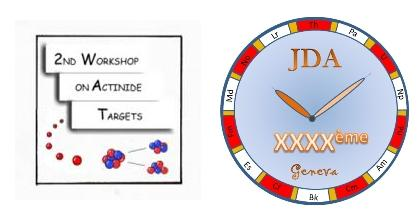Speaker
Dr
Thomas Scott
(University of Bristol)
Description
The interaction between metallic uranium surfaces and water vapour is considered to be most important in regard to the environmental corrosion of the metal. Numerous studies have examined the initial stages of these interactions. However, there have been discrepancies in the published data describing kinetic laws, pressure dependence of the reaction rate constant and activation energies. The precise mechanism for uranium corrosion is not entirely clear. Existing discrepancies in the published data may, in part, be related to differences in the provenance and purity of the metal used by different groups, with the reactivity of impurity species such as carbide precipitates, affecting recorded data.
To provide data for an improved understanding of the role of impurity phases in the uranium-water reaction, samples of uranium containing 600 ppm carbon were analysed during and after controlled exposure to water vapour at 19 mbar pressure in an environmental secondary electron microscope (ESEM).
The oxidative corrosion of carbide (UC) inclusions at the surface of uranium metal was readily observed, forming voluminous secondary precipitates determined to be nominally UO3.H2O by X-ray diffraction techniques. A focused ion beam (FIB) system was used to produce sections that were cut through the reacted carbides for subsequent analysis by electron microscopy. Over the period of a week the precipitates were observed to grow in size, consuming only the carbide particles and not the surrounding metal. In some cases complete decomposition of the surface carbides was observed.
From the results of the current work it is apparent that that the carbide particles reacted readily with the water vapour. Resultantly it is suggested that disparities between previous studies of the uranium-water reaction may be partly attributable to differential purities of uranium metal used by different research groups, with resultantly different populations of carbide particles.
Primary author
Dr
Thomas Scott
(University of Bristol)
Co-authors
Prof.
Geoffrey Allen
(University of Bristol)
Dr
James Petherbridge
(AWE Aldermaston, UK)
Dr
Joe Glascott
(AWE Aldermaston, UK)
Mr
Nicholas Harker
(University of Bristol)
Dr
Richard Ball
(University of Bristol)




